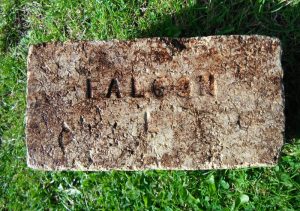AAH had many associations to the Scottish Brick Industry.
AAH originates back to 1892 when Cleeves Company was formed in Wales, owning about 7,000 acres of land. It merged with two other local companies, Gurnos and Gellveeidrim, to form Amalgamated Anthracite Collieries Limited.
The Chairman of the company was Alfred Mond, 1st Baron Melchett and it was floated on the Stock Exchange on 29 June 1923. The registered office was 29/30 King Street, Cheapside, London. Amalgamated Anthracite Collieries Limited held its first company meeting on 5 September 1923 at the Cannon Street Hotel. On 1 July 1927, the company merged with United Anthracite Collieries Limited to become known as A.A.C Anthracite, based at 120 Fenchurch Street.
AAH’s original business was producing and distributing anthracite and other solid fuels across South Wales. The company later diversified its interests in different markets including health services, building materials, transport, warehousing and environmental services (landscape conservation and waste disposal). In 1954, it was agreed to change the company name to Amalgamated Anthracite Holdings Limited (AAH). In early 1971 the company abbreviated its name to AAH Limited.
In 1976, AAH sold off its interests in fuel and building materials. Healthcare services became the company’s main business activity. AAH expanded its pharmaceutical interest by taking over a large number of businesses including Chemists Holding and Hills Pharmaceuticals.
AAH Limited became a constituent company of AAH Holdings in 1981, based in London. In 1985 the headquarters of AAH Holdings plc moved to the south of Lincoln. By the late 1980s, when based in Lincoln, the holding company was turning over £1 billion.
In 1985 AAH acquired pharmaceutical wholesaler Vestric Limited from GlaxoSmithKline, which continued the company’s growth and led to the formation of AAH Pharmaceuticals Limited.
The company was bought by Celesio AG in 1995 (formerly GEHE AG) and the headquarters moved to Manor Park in Runcorn, north Cheshire. In 1999 the headquarters moved to Coventry, where they remain today.
*********************************
Tippetcraig Mine, Bonnybridge – Established 1953 – Founders Mr Wilson of Polmont Engineers. The company changed hands many times and by 1979 it was in the hands of AAH.
In 1979 Tippetcraig employed 16 men ( 10 had been laid off in 1978). The mine had potential to produce 1500 T of clay per week however at its height it produced 500T per week and in 1979 only 250T per week – source Falkirk Museum and Archives.
Craigend Brickworks Ltd was established in 1938 on the site of the drift mine at Craigend, Falkirk, leased to the company by Carron Co. The works closed in 1943 due to lack of demand for bricks but re-opened after the war. The name was changed to Craigend Refractories Ltd in February 1972 and the company was sold to Amalgamated Anthracite Holdings Ltd. In 1983 the Carbrook Mine and Craigend Works were closed and the remaining assets and trade names sold to the Burn Fireclay Co of Morpeth.
Carbrook Clay Mine, Torwood, Falkirk The fireclay industry was of national importance for Scotland during the late 19th century and the first half of the 20th century. Fireclay was used as the main material in the manufacture of toilet furniture and sewer pipes. In 1951 Scotland produced almost 60% (by value) of all British unprocessed fireclay. The Carbrook Clay Mine lies to the north-west of Falkirk and was opened c.1953 and closed c.1982. Canmore








